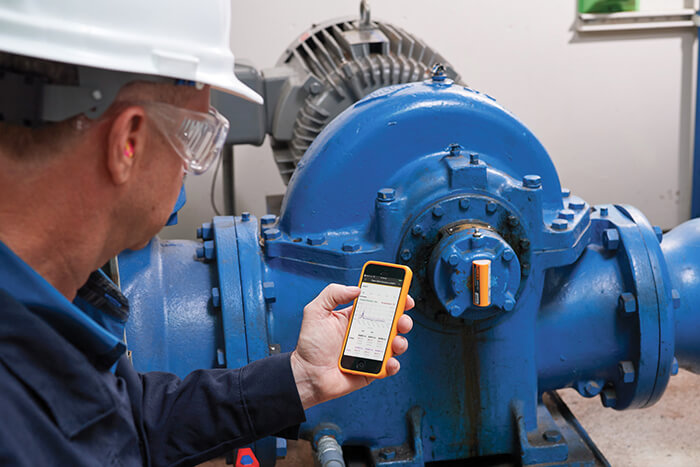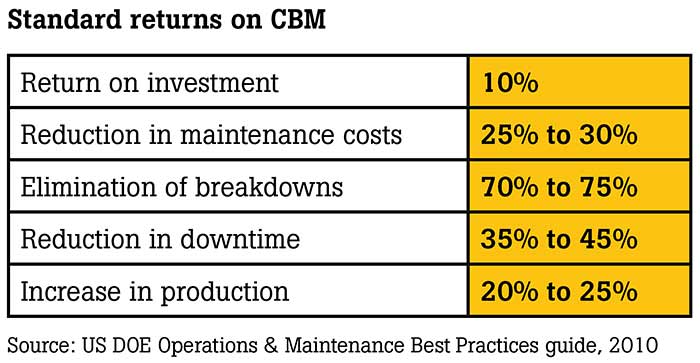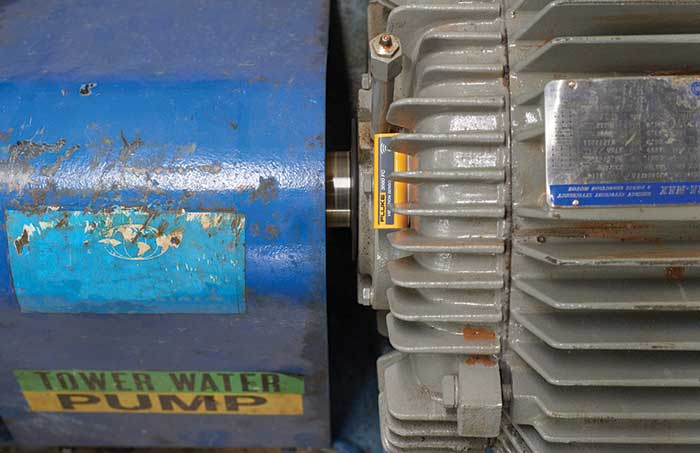The industrial internet of things (IIoT) connects data, teams and systems, providing significant opportunities for improving facility operations. One of those improvements includes the adoption of condition-based maintenance (CBM) using advanced monitoring technologies and tools.
 Image 1. Sensors and PM tools cannot ensure reliability. (Images courtesy of Fluke)
Image 1. Sensors and PM tools cannot ensure reliability. (Images courtesy of Fluke) Table 1. Standard returns on CBM
Table 1. Standard returns on CBM Where, What, Why & How
1. Are you honestly assessing your current PM status? Make no mistake, being on a journey and not knowing the basics of why you are on it can take you down a road to nowhere. Before end users do anything, they need to understand where the facility and its people stand on the path to CBM. First, define the facility’s maintenance and reliability status and confirm that the fundamentals are solid. Do technicians grasp, and can they apply basic RCM knowledge, or do they need further training? Are process and PM routines effective and efficient, or do they need to be revamped? Second, M&R teams should examine in detail what they are doing, why they are doing it, and how they are doing it. Figuring out where the teams are in the journey helps customize a CBM program specific to the facility. Image 2. Analysis helps determine which assets need regular, route-based screening.
Image 2. Analysis helps determine which assets need regular, route-based screening. Image 3. Not all assets are PM candidates
Image 3. Not all assets are PM candidatesA Continuous Journey
As IIoT continues to evolve, so will the reliability journey. When starting CBM, it is a step away from unscheduled and reactive responses to equipment failures, and a step toward more proactive and predictive maintenance. CBM helps M&R teams make better maintenance decisions, more timely repairs and saves time and money by improving equipment availability and performance. It is a means to further optimize and reduce unnecessary scheduled maintenance and maximize uptime using IIoT.RELIABILITY GLOSSARY OF TERMS
IIoT—industrial internet of things—interconnects devices and equipment, allowing for greater system collaboration
RCM—reliability-centered maintenance (practice)—used to optimize maintenance programs and maintain system functions, and to help identify, prioritize and control failure modes
CBM—condition-based maintenance (process)—used to identify the rules that must be applied to manage failure modes that may cause the operational failure of a physical asset
PM—preventive maintenance (strategy)—used to avoid costly equipment failure or unplanned downtime via regularly scheduled, routine maintenance of assets, regardless of their condition
Bad actor—repeatedly failing or problematic equipment

